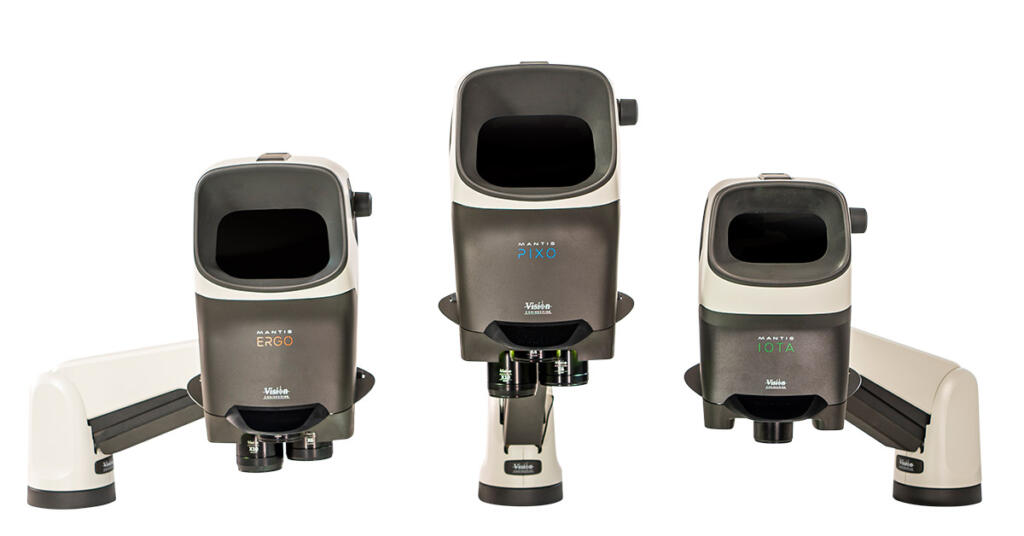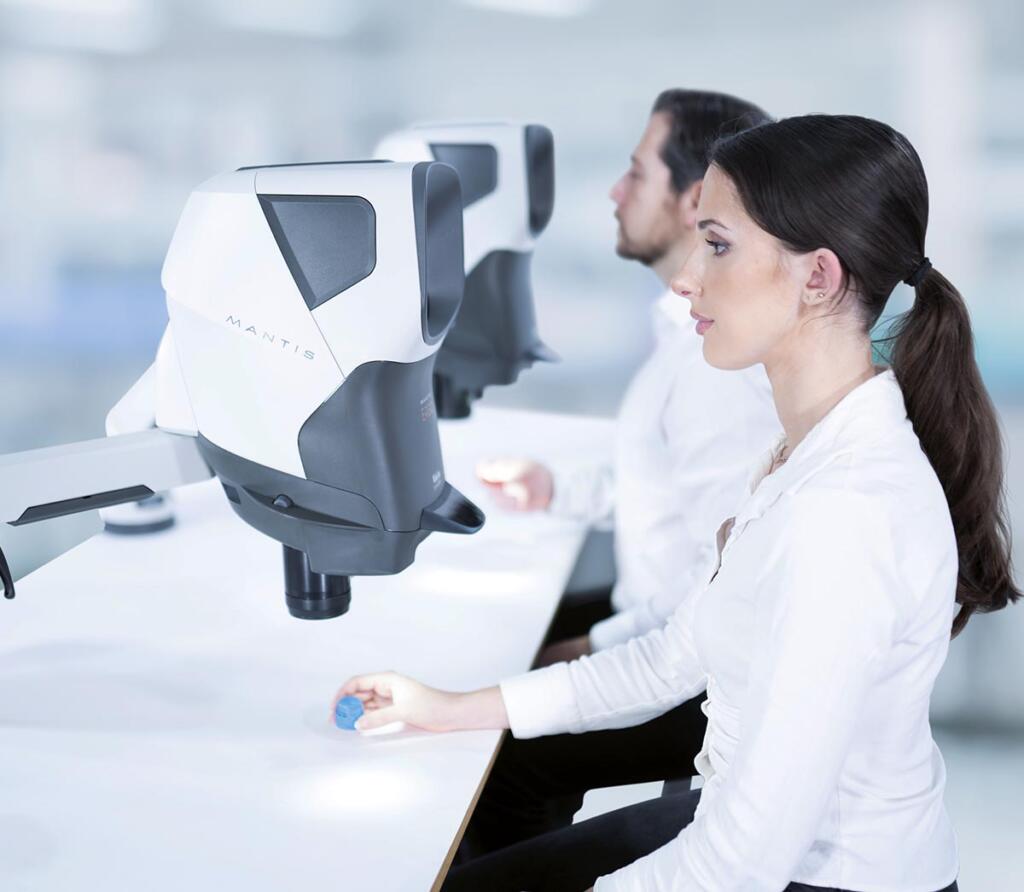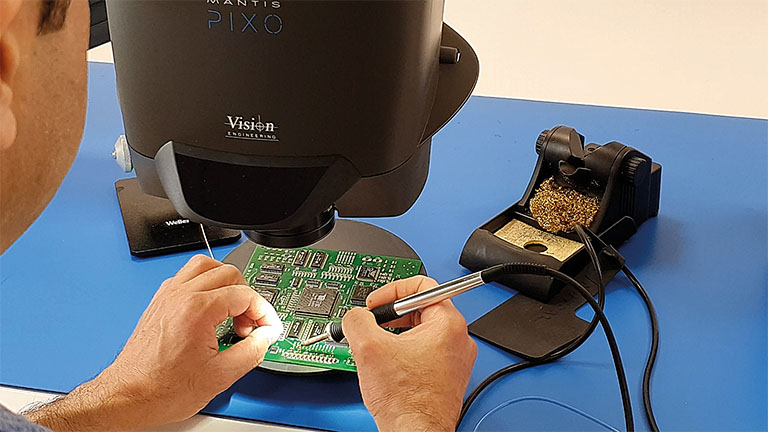Expanded-pupil technology
Our unique expanded-pupil technology makes working with microscopes more comfortable and more productive by eliminating problems that affect all traditional binocular microscopes, such as users needing to precisely align their eyes with the eyepieces.
Even a slight movement can result in a loss of the image. Users are forced to adopt an uncomfortable posture, hunching over the microscope, often for extended periods. Strain and muscle cramps, in the neck, shoulder and back are common, as is eyestrain.


Ergonomic microscope design for a natural posture
Expanded-pupil technology solves the problem by enabling the user to sit back from the microscope, with a more natural, upright posture, significantly reducing operator discomfort. Users see the image via a viewing ‘head’ which is in front, rather than below them.
No more eyestrain
Another drawback of traditional binocular microscopes is the narrow, highly concentrated light paths, which can strain the eyes as the pupils are forced to constrict. With expanded-pupil technology the extra distance between the eyes and eyepieces allows ambient light into the eyes, reducing pupil constriction.
What’s more, expanded-pupil technology light paths (the light exiting the eyepieces) are 10x wider than a traditional microscope meaning users do not need to precisely align their eyes with the eyepieces.
Greater productivity
Eyepiece-less technology makes time spent at the microscope more comfortable, with a better quality image, understanding of the subject and enhanced depth of field.
Add greater freedom of movement and reduced need for frequent rest breaks, the workplace becomes far more productive, with staff able to examine more subjects, faster and more accurately, in a single session.

No ‘floaters’
Another benefit of expanded pupil technology is that annoying floaters are removed from view. Floaters are small items of biological material that move around the fluid in the eye. They appear like cob-webs, worms or small black dots. The optical system of binocular microscopes makes the view of floaters more pronounced. Vision Engineering’s eyepiece-less microscopes present the image so floaters are not seen. Meaning viewers can be confident that what they see is in the subject.
See more
With the optical path being larger than the eye-pupil, users are able to change their view of the subject simply by moving their head. This means it is possible to change perspective for a better view, understanding of subject and enhanced depth of field.



